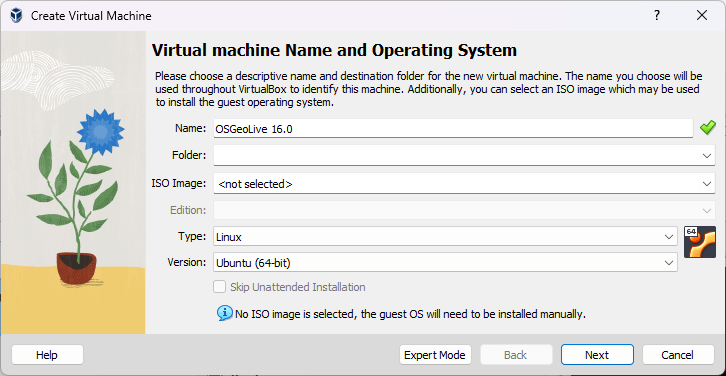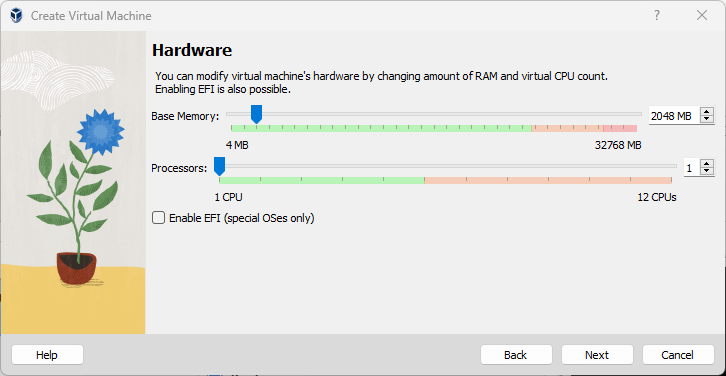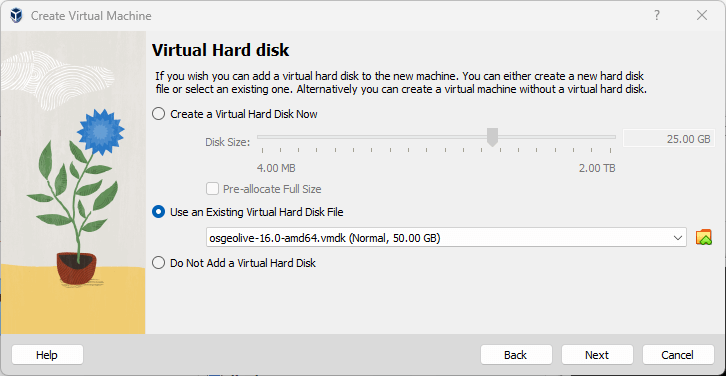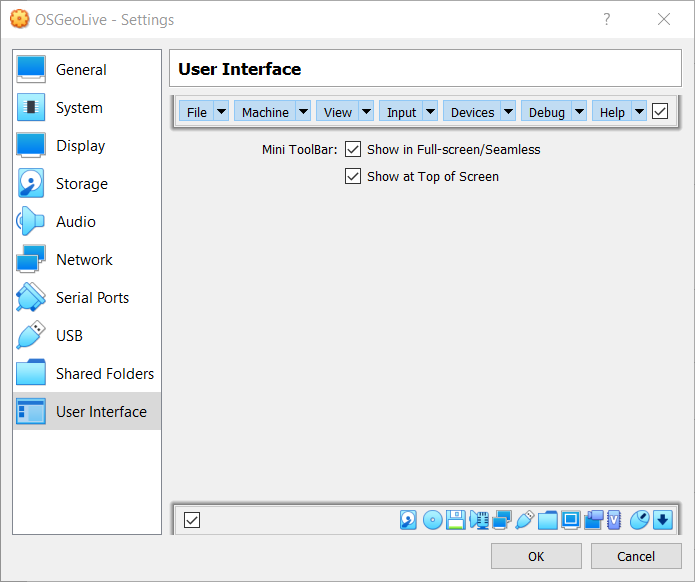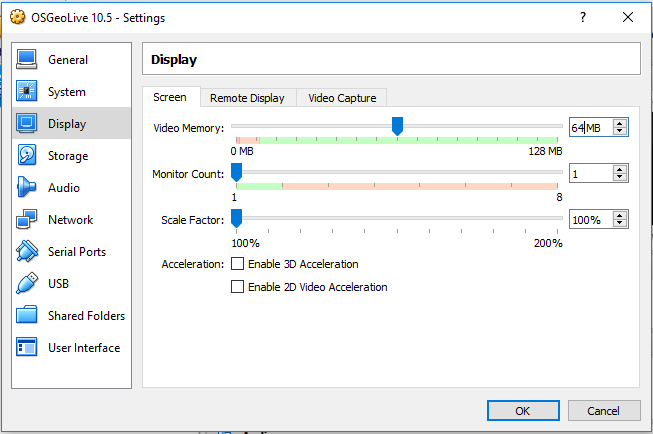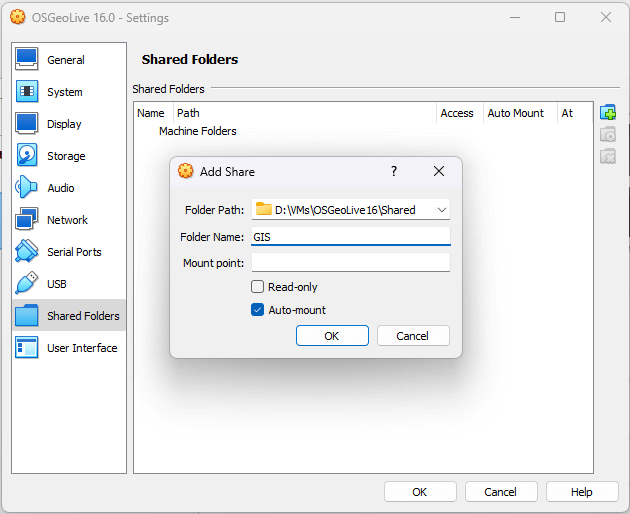Exécuter dans une machine virtuelle¶
Overview¶
This Quick Start describes one way to run OSGeoLive within a VirtualBox virtual machine (VM). For other methods, follow links from the « See Also » section below.
Note
To learn more about the benefits of virtualization, see Virtualization in Wiki
Prérequis¶
Software
Download Virtual Box for your platform, and install the software. On Windows run the installer, or on Ubuntu-like Linux systems run the following:
apt-get install virtualbox-oseDownload the OSGeo Virtual disk file (vmdk) from the links at live.osgeo.org. Then unzip the downloaded file (using 7-Zip ).
Hardware
RAM: Minimum 2 GB. The Lubuntu system runs well with 1 GB of RAM, and you’ll need to keep at least the same amount of memory for some of your applications (such as GeoServer). So a total of 2 GB is recommended for a smooth operation.
Spare: Minimum 30 GB Hard Disk Space. The virtual disk file (vmdk) from live.osgeo.org unzips to 22 GB. You’ll also want more space to allow some room to work on the virtual machine. So a total of 30 GB is a good recommendation.
CPU: Any CPU will do, but a processor which supports « Virtualization Technology » will be faster. Check if your computer supports Virtualization Technology
Note
Most machines produced after 2010 will meet these requirements.
Step 1 : Create a Virtual Machine¶
Start the VirtualBox application and click New. Create Virtual Machine pop up is displayed.
Enter a name such as OSGeoLive, and select Linux as the « Operating system », and Ubuntu as the « Version », and then click Next.
In the next screen set the memory to at least 1024 MB (or more if your host computer has more than 4GB, like in the screenshot below).
Continue to the next screen and select Use an existing virtual hard disk file. Click the folder icon to browse to where you saved the OSGeoLive vmdk-file. Select the file, click Next and Create.
Step 2: Configure VM¶
VM Settings
Once the VM is created, click the Settings button. In the User Interface section, click to select Show at top of screen for the Mini toolbar.
Go to the Display section and increase video memory to 32 or 64 MB. In some host operating systems, it may be required to « Enable 3D Acceleration » for display to work properly.
Add shared folders to access files from host
Go to the Shared Folders section, and click the Add folder (green + icon on the right) to find a directory on your host computer that you wish to share inside the VM.
Vous pouvez choisir de rendre le dossier partagé en lecture seule et monté automatiquement. Une fois que le « chemin d’accès au dossier » et le « nom du dossier » sont définis, cliquez sur OK, puis à nouveau OK pour terminer et fermer la fenêtre de paramétrage.
Step 3 : Running the Virtual Machine¶
Now bootup the VM by clicking the Start (green arrow) button.
The OSGeo-Live virtual display (i.e., the window size) may be very small, and will not be able to increase until you install Guest Additions. You should install the virtualbox guest additions, this will allow you to use full-screen mode and scaled mode. These can be installed by running the command below in a terminal. When prompted for a password, you should use the default
user.sudo apt-get install --yes virtualbox-guest-utils virtualbox-guest-x11
(Alternative) If the above command does not work, use the following alternative:
From the VirtualBox Devices menu, select Insert Guest Additions CD Image
Click OK when prompted to open the removable media in File Manager.
In File Manager, select Tools → Open Terminal.
Tapez dans le terminal :
sudo ./VBoxLinuxAdditions.run
Press ENTER.
When prompted for a password, you should use the default
user.
Step 4 : Set OSGeoLive user¶
Note
Some tools configured on OSGeoLive rely of « user » to be in the « users » group so they can write into the data directory. If not set, these tools will fail when run.
Démarrer un terminal.
Run
sudo adduser user users.Appliquez cette modification en commençant une nouvelle session de bureau : soit en redémarrant la machine virtuelle, soit vous vous déconnectez et vous reconnectez (nom d’utilisateur « user », mot de passe « user »).
Next steps:¶
Why don’t you try running some applications, as described in the OSGeoLive Quickstart


